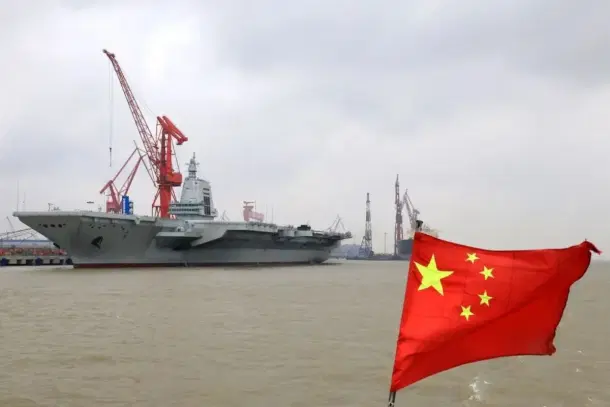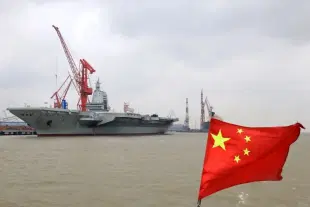News Brief
China Hints At Breakthrough Catapult Launch Aboard New Aircraft Carrier Fujian
Swarajya Staff
Aug 04, 2025, 09:13 PM | Updated 09:13 PM IST
Save & read from anywhere!
Bookmark stories for easy access on any device or the Swarajya app.


China’s first aircraft carrier equipped with catapults, the Fujian, is nearing a key milestone as it prepares to launch and recover fixed-wing aircraft using an electromagnetic system.
While official confirmation from China is pending, new imagery released by Chinese state media shows a J-15T fighter aboard Fujian with its afterburners lit, apparently in launch position, TheWarZone has reported. Another clip shows a J-15 casting a shadow over the flight deck, suggesting close flybys or possible launch operations.
The undated media release coincided with the 98th anniversary of the founding of the People’s Liberation Army. Fujian which began sea trials in May 2024 has now completed eight rounds of testing and is expected to enter service by the end of 2025.
Unlike Indian aircraft carriers such as INS Vikrant and INS Vikramaditya which use a ski-jump to help jets take off under their own power Fujian uses a catapult launch system.
Catapults, especially the newer electromagnetic type used on Fujian, can rapidly accelerate aircraft over a short distance, allowing heavier jets and support aircraft to be launched with more fuel or weapons. This gives China a major leap in carrier-based airpower as it enables a wider range of aircraft operations in all conditions.
The J-15T is a catapult-capable version of China’s carrier-based fighter originally derived from Russia’s Su-33. Fujian is China’s first CATOBAR (Catapult Assisted Take-Off But Arrested Recovery) carrier and features electromagnetic launch systems EMALS skipping traditional steam catapults entirely.
Alongside manned fighters the carrier is expected to eventually operate the stealthy J-35 KJ-600 early warning aircraft and potentially uncrewed aerial vehicles. Imagery also shows deck crew performing FOD walks a routine step ahead of flight operations and Z-9 helicopters standing by as plane guards.
The vessel is a key part of China’s broader naval modernisation push aimed at expanding blue-water capability and preparing for high-end missions including potential action near Taiwan. A larger nuclear-powered carrier tentatively labeled Type 004 is reportedly under development.





